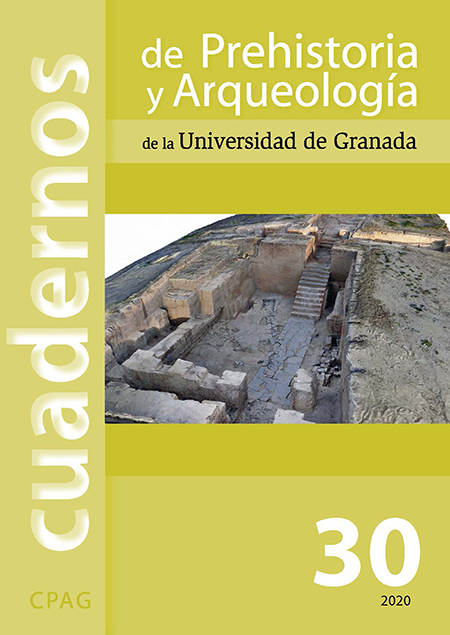THE ETERNAL TRACE OF THE EFFORT. BONE MARKERS OF PHYSICAL ACTIVITY AT THE COPPER AGE POPULATION FROM DOLMEN DEL CORTIJO DE LOS VÍNCULOS
Main Article Content
Abstract
From a biomechanical approach, human remains can be modified from daily patterns of physical activity, in which a whole series of cultural and labor systems are interwoven. From the methodological perspective of bone markers of physical activity, we have analyzed the 32 individuals from Dolmen del Cortijo de los Vínculos-I, which belongs to the Megalithic Graveyard of Pantano de los Bermejales (Granada), from the perspective of skeletal markers of physical activity. This is approached through the measurements of the bones, the application of entheseal graduation systems to the postcranial skeleton, and the paleopathological assessment of certain vertebral conditions caused by mechanical stress. In general, it was observed that this population maintained a biomechanical pattern where the physical activities related to heavy lifting, walking and squatting. This would be within the framework of a Copper Age society where apart from the agricultural practice, there would be a major importance of livestock, hunting and residential mobility. Thus, the skeletal markers of physical activity seem to be a good complementary source of information about the daily life patterns in the past.



